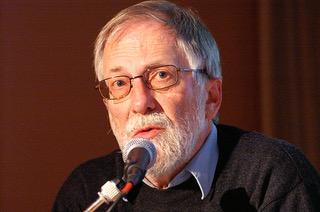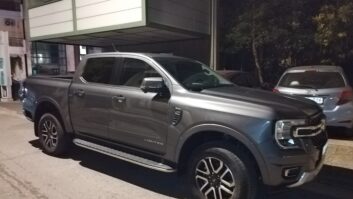 The author writes on radio from Stockholm.
The author writes on radio from Stockholm.
In “DAB Advocates Celebrated Growth in 2020” and “Assembly Highlights Advances for WorldDAB,” WorldDAB President Patrick Hannon claimed that 2020 was a good year for DAB+. I am disputing that. Slanted or exaggerated information about DAB have circulated over the years. Unfortunately, such information has indiscriminately been accepted by publishers in Europe and the U.S. The journalistic mission should be to uncover fake news within the media industry.
Many might not realize that WorldDAB is an organization with the purpose to promote the “Digital Audio Broadcast” brand introduced 25 years ago in the United Kingdom, Norway and Sweden. Such a resourceful lobbying body will, of course, never tell us the full story complete with all the inconvenient facts regarding DAB. So, beyond the information barrage by DAB stakeholders, there are a lot of claims to question and investigate.
WorldDAB made some successful lobbying for an EU Communication Code requirement that car radio receivers in new passenger cars — not buses and trucks — must be able to receive “terrestrial digital radio. “But it is NOT a requirement “to receive DAB+.” This would be contrary to EU competition rules as there are also other system brands for terrestrial digital radio, e.g. the DRM system (established in India), HD Radio (used in the United States), Chinese CDR and the emerging global technology 5G Broadcast. In fact, the European Union has not recommended or defined DAB or any other system as standard for terrestrial digital radio. And probably never will.
Where are the DAB listeners, really? Introducing DAB in a country does not mean that listeners will abandon FM and broadband. Except for the U.K. WorldDAB has not presented any DAB listening figures. It is estimated that less than 1% of the world’s population today listens to DAB radio. In most countries “digital radio” is not DAB, it is radio on the internet.
After the fiasco in Norway the DAB stakeholders are smart enough to report only ”digital listening” which includes both DAB and on-line. Big attempts are made to hide the truth. But the Norwegian radio listener is not happy with the national transition from FM to DAB.
In neighboring Sweden DAB broadcasting still exists, but there are extremely few listeners. Why should they?
Since 1995 82 million DAB/DAB+ receivers have been sold in the world. This should be put into the perspective that there are more than 6 billion FM receivers and now more than 2.5 billion smartphones. The sale of standalone receivers is decreasing while the smartphone/connected car will be the only future radio listening platform to challenge FM radio.
The BBC, a pioneer of the development of DAB in the 1990s, now regards the internet as the most important platform for radio and television of the future. BBC is already successfully testing 5G Broadcast in Scotland.
Attempts to include DAB in smartphones have not been successful. A DAB receiver consumes more energy than a corresponding FM receiver. This is a decisive reason for the lack of a global consumer market for DAB. The prospects that DAB will become a major radio listening platform in the U.K. or elsewhere are slim. So why even go on trying?
There are no signs of DAB ever being accepted in the world’s 11 largest nations among them China, India, United States, Brazil, Russia, Mexico and Japan, which together muster half the world’s total population.
Today most standalone receivers sold including in-car radio are capable for both FM and DAB. In Sweden a new car is a connected car. In a well-covered mobile broadband country this provides superior diversity and sound quality for radio online also in your car.
FM is still available as a robust emergency alert system (EAS) in most countries (except Norway). Finland has recently passed a national law requiring FM for all new cars.
Some countries will go for other digital systems for terrestrial radio such as DRM and HD Radio with better geographical coverage than DAB. These systems use current frequency bands for FM (VHF II) as well as shortwave and mediumwave (HF). Investing in short-range DAB transmitters will be too expensive outside metropolitan areas. This is already on the agenda in Australia, India, Brazil and Russia.
FM will probably be retained for decades in most of the world’s 220 countries and territories. Norway occupies a world-unique position as the only country where FM has been replaced by DAB for its national network (FM is retained for local radio). Switzerland might follow suit 2023. In Australia DAB is established in metropolitan areas, but AM and FM will be retained. Among the countries that have previously tested DAB and/or declined public investment at national level are Canada, Hong Kong, Taiwan, Portugal, Spain, Latvia, Hungary, Finland, Sweden, Ireland and New Zealand.
Some digital technologies are short-lived. Remember the CD, the DAT cassette. And watch out; Switzerland last year closed its terrestrial digital television network.
During the quarter-century that DAB existed, the chances of a market breakthrough were significantly greater in the 1990s than today. Then the internet did not exist as a major media platform and DAB could attract with improvements as more channels than FM. Today, the system cannot offer the radio listener any competitive added value when mobile and fixed broadband are already established everywhere. And with FM retained as a global standard.
DAB tried to kill FM, but from behind came internet and killed DAB. There is a lot to learn from this. I look forward to read in-depth reports also based objective sources.
Radio World welcomes comments on this or any article. Email [email protected] with “Letter to the Editor” in the subject field.







